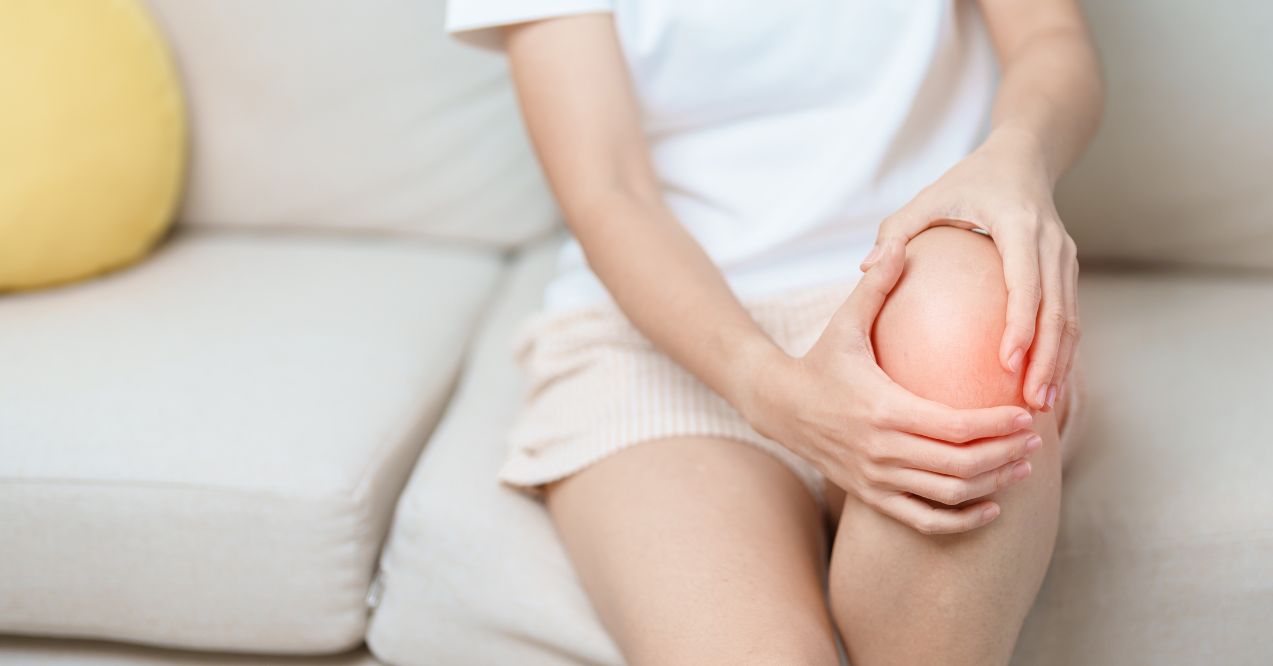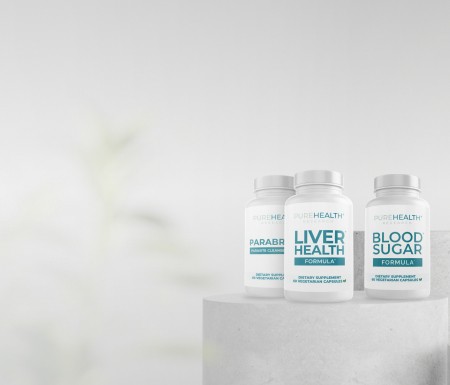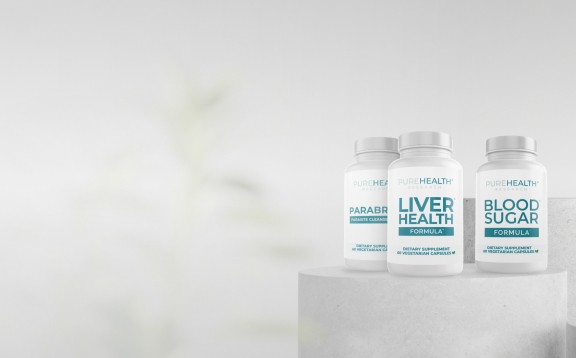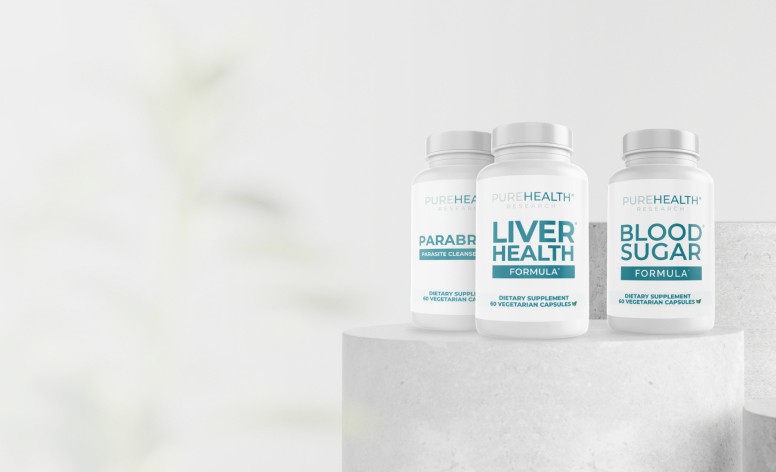Can Dehydration Cause UTI?
Medically reviewed by our experts
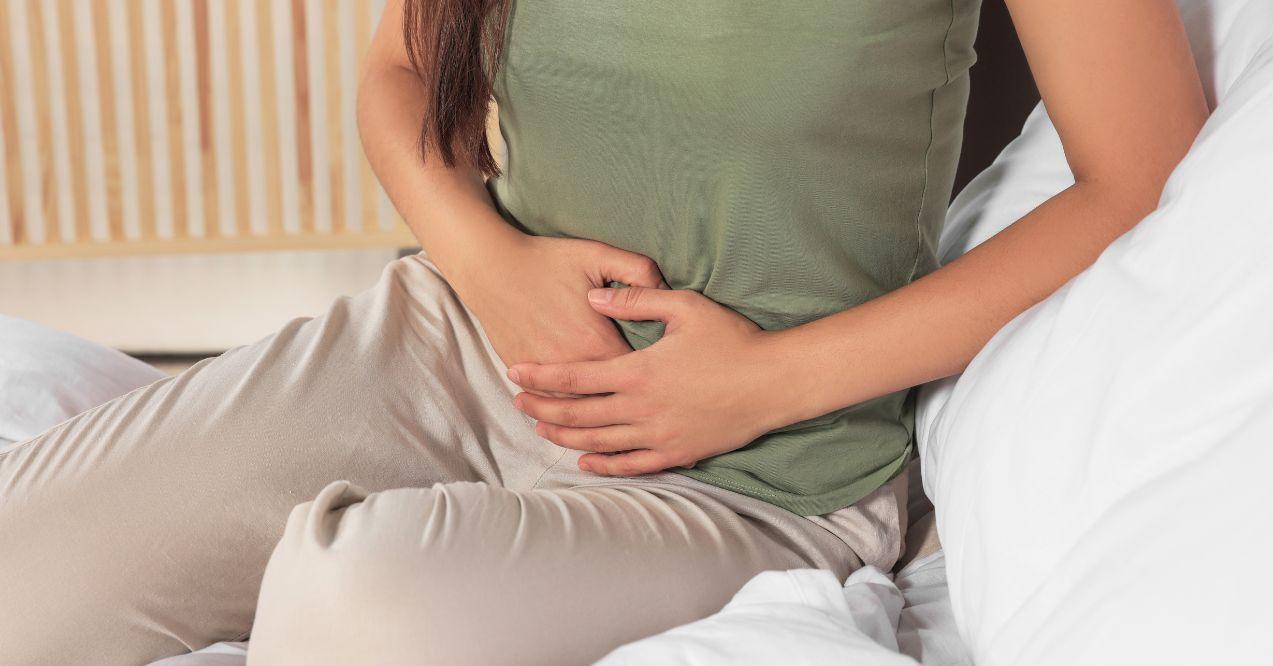

The question of can dehydration cause UTI (Urinary Tract Infections) opens up a vital discussion on the importance of hydration for maintaining urinary health. UTIs are a common health issue, with significant differences in occurrence rates between males and females in the United States.
Women are notably more likely to develop UTIs compared to men, with around 50% of women experiencing at least one UTI in their lifetime, whereas the incidence in men is notably lower. These infections can range from mild irritations to severe complications if left untreated, with symptoms including a strong urge to urinate, a burning sensation during urination, and cloudy or dark urine.
This article will explore the intricate relationship between dehydration and the risk of developing UTIs, underscoring how inadequate fluid intake can impact urinary tract health. Dehydration can reduce urine volume, leading to a higher concentration of bacteria in the bladder, which is a risk factor for UTIs. Given the anatomy of the female urinary tract, women are particularly at risk, making hydration an essential preventive measure.
What Is a UTI?

A Urinary Tract Infection (UTI) is a prevalent health issue affecting millions globally. It occurs when bacteria infiltrate the urinary system, including the bladder, kidneys, urethra, and ureters, leading to symptoms such as a burning sensation during urination, urgency, and pelvic pain.
While UTIs are more common in women due to anatomical differences, men can also be affected, especially with age. Understanding UTIs involves recognizing their causes, symptoms, and the potential for serious complications if left untreated.
UTI Symptoms
Symptoms of a Urinary Tract Infection (UTI) can vary widely among individuals but frequently include:
- A strong, persistent urge to urinate, which may lead one to wonder about the duration of these uncomfortable symptoms and seek information on how long does a UTI last?
- A burning sensation during urination, prompting concerns about the body’s response to infection.
- Passing frequent, small amounts of urine, indicating the urinary system’s distress.
- Cloudy appearance of urine, often a key indicator of the infection’s presence.
- Urine that appears red, bright pink, signaling filtration issues in the urine and potentially alarming symptoms.
- Strong-smelling urine, another common sign that may raise immediate concerns.
- Pelvic pain in women, particularly centered in the pelvis and around the pubic bone area, might also lead to questions about less commonly discussed symptoms, such as can a UTI cause bloating?
UTI Causes
Urinary Tract Infections affect both men and women, triggered by bacteria entering the urinary tract. While the causes can be multifaceted, there are specific factors unique to each gender due to anatomical and behavioral differences. Interestingly, questions like can saliva cause UTI and can drinking alcohol cause UTI often arise, pointing towards common misconceptions and lesser-known triggers of UTIs.
Saliva itself is not a typical cause of UTIs, but intimate activities that introduce bacteria to the urinary tract can lead to infections. On the other hand, excessive alcohol consumption may not directly cause UTIs, but it may contribute to behaviors that increase the risk of infection, such as neglecting hygiene or engaging in unprotected sexual activity.
Here are the primary causes of UTIs:
For Women:
- Anatomy. The urethra is closer to the anus and the urethral opening is closer to the bladder. This makes it easier for bacteria around the anus to enter and affect the urethra, causing an infection and spreading to the bladder. Unprotected Sexual activity, which can introduce bacteria into the urinary tract.
- Certain types of birth control can alter the bacterial balance.
For Men:
- Prostate issues, as an enlarged prostate can hinder the flow of urine, allowing bacteria to multiply.
- Unprotected Sexual activity, which can introduce bacteria into the urinary tract.
- Urinary retention, which can happen due to an enlarged prostate or other urinary tract abnormalities.
Both men and women can reduce their risk of UTIs by maintaining good hygiene, staying hydrated to flush out bacteria, and practicing safe sex. Regular medical check-ups can also help manage risk factors related to UTIs.
Who’s More at Risk of Getting a UTI?

Females are significantly more at risk of developing urinary tract infections (UTIs) compared to males due to several anatomical, physiological, and behavioral factors. The primary reason for this is the female urethra’s proximity to the anus increases the risk of bacterial transfer, making hygiene practices particularly important for potentially preventing UTIs.
Additionally, the female urethra’s shorter length allows bacteria easier access to the bladder, ureters, and kidneys. This anatomical difference means that bacteria, most commonly pathogenic E. coli from the bowel, have a shorter distance to travel to cause an infection in the bladder or the urinary tract.
Are UTIs Contagious? UTIs are not contagious in the literales sense, however, sexual activity may introduce bacteria into the urinary tract.
Menopause is another factor that increases the risk of UTIs in females. The decline in estrogen levels during menopause can lead to changes in the urinary tract that make it more susceptible to infection. These changes include a reduction in the protective lactobacilli bacteria in the vagina, thinning of the urethra, and changes in the urinary tract’s lining, making it easier for bacteria to adhere and cause infections.
What Is Dehydration?

Dehydration is a condition that arises when the body loses more fluids than it takes in, leading to an insufficient amount of water to perform normal functions. This imbalance can affect various bodily processes, making it crucial to recognize and address dehydration promptly to maintain health and well-being.
Dehydration Symptoms
Dehydration can present a range of symptoms, indicating the body’s urgent need for fluids. Recognizing these signs is essential for potentially preventing more severe health issues:
- Thirst – The first and most obvious sign that your body needs water.
- Darker Urine – Indicates concentrated urine due to reduced fluid intake.
- Reduced Urination – Fewer trips to the bathroom than normal.
- Dry Mouth – A lack of saliva, leading to discomfort.
- Fatigue – Feeling unusually tired or lethargic.
- Lightheadedness – A sense of dizziness or being unsteady, especially upon standing.
- Confusion – Difficulty in concentrating or thinking clearly.
- Rapid Heartbeat and Breathing – The body’s attempt to maintain oxygen and nutrient delivery to cells.
- Loss of Skin Elasticity – Skin may not return to its normal state quickly when pinched.
- Sunken Eyes – Eyes may appear hollow or recessed.
These symptoms underscore the body’s critical need for water to function correctly. Early intervention by increasing water intake can alleviate these symptoms, but persistent or severe dehydration requires medical attention to avoid complications.
Dehydration Causes
Dehydration occurs due to inadequate fluid intake or excessive fluid loss, impacting the body’s ability to carry out normal functions. Various factors contribute to this imbalance:
- Insufficient Water – Intake Not consuming enough water daily can lead to dehydration, especially in hot weather or during physical activity.
- Excessive Sweating High – temperatures or vigorous exercise can cause the body to lose a significant amount of water through sweat.
- Fever Higher – body temperatures increase water loss, exacerbating dehydration risks.
- Diarrhea and Vomiting – These conditions can lead to rapid fluid loss, making it challenging to replenish water levels.
- Diuretics Medications – that increase urine production can deplete the body’s water reserves if not balanced with adequate intake.
- Illnesses and Health Conditions – Certain diseases may increase the risk of dehydration due to increased urination as the body tries to remove excess glucose.
Understanding these causes is crucial for implementing effective preventative strategies, like increasing fluid consumption during illness or hot weather, and monitoring water intake and loss during physical activity.
Who’s at Risk of Dehydration?
Certain groups are particularly vulnerable to dehydration due to physiological factors, lifestyle choices, or health conditions.
- Athletes, for instance, are at a higher risk due to increased fluid loss through sweat during intense or prolonged physical activity.
- The elderly are another high-risk group, as their bodies may not signal thirst as effectively, and they may have conditions or take medications that increase dehydration risk.
- People with medical conditions like digestive disorders with diarrhea, kidney diseases, or those taking diuretic medications are also more susceptible.
These individuals may experience increased urination or have difficulties in maintaining fluid balance, heightening their dehydration risk. It’s crucial for these groups to be aware of their heightened risk and to take proactive steps, such as drinking adequate amounts of fluids and monitoring for signs of dehydration, to potentially prevent its onset and associated health complications.
Can Dehydration Actually Cause UTI
The relationship between dehydration and urinary tract infections (UTIs) has been a topic of considerable interest within the medical community. Experts agree that dehydration can indeed play a significant role in increasing the risk of UTIs, affecting both males and females, though the mechanisms and impact may vary slightly due to anatomical differences.
Can Dehydration Cause UTI in Females?
In females, dehydration can lead to a decreased volume of urine, which in turn reduces the frequency of urination. This reduced flushing of the urinary tract allows bacteria to adhere to the urethra and bladder walls more easily, increasing the risk of infection. Since females have a shorter distance for anal bacteria to reach the urethra, making females more susceptible to UTIs. The question of can being dehydrated cause a UTI is particularly relevant for women, as their risk is compounded by their anatomy.
Can Dehydration Cause UTI in Males?
While less common, males are not immune to UTIs, and dehydration can increase their risk as well. In males, dehydration can cause urine to become concentrated, which can irritate the bladder and potentially lead to an environment that’s more conducive to bacterial growth. Although anatomy separates anal bacteria from the urethra and the longer urethra in males provides a natural barrier against the ascent of bacteria into the bladder, dehydration can compromise this defense, leading to an increased risk of UTIs.
Across both genders, can dehydration cause UTI symptoms is a valid concern. Symptoms such as burning during urination, increased frequency of urination without passing much urine, and cloudy or strong-smelling urine can all be exacerbated by dehydration. The physiological reason behind this connection is straightforward: adequate hydration helps to dilute urine and flush out bacteria from the urinary tract, reducing the risk of infection.
How Much Water Should I Drink?

Determining the optimal amount of water to drink daily to help with urinary tract infections (UTIs) and promote overall health can vary based on several factors, including age, gender, and lifestyle. However, general guidelines can help individuals gauge their hydration needs:
- Children – Water intake for children depends on age, size, and activity level. As a general rule, children aged 4-8 years should aim for about 5 cups (1.2 liters) of water daily. For older children and teenagers, 7-8 cups (1.6-1.9 liters) are recommended. These needs increase with physical activity and in hot climates.
- Adult Women – About 2.1 liters (91 ounces) of fluids per day, including all beverages and water-containing foods, with an emphasis on water for UTI prevention.
- Adult Men – Roughly 3 liters (104 ounces) of fluids daily, with a significant portion from water, especially for those concerned with UTI prevention.
- Elderly – Older adults often have a diminished sense of thirst, which can lead to dehydration. They should aim for about 1.7 liters (57 ounces) of fluid per day, but this can vary based on health conditions and medication use. Ensuring regular fluid intake is crucial, even when not feeling thirsty.
- Pregnant and Breastfeeding Women – Increased fluid needs to about 10 cups (2.4 liters) for pregnant women and 13 cups (3.1 liters) for those who are breastfeeding, to support overall health and lactation.
Factors that may require adjustments to these general guidelines include:
- Physical Activity – Increased exercise intensity or duration requires additional water to compensate for fluid loss through sweat.
- Environment – Hot or humid weather can lead to more sweating, necessitating greater fluid intake. The same applies to heated indoor environments during winter.
Remember, while water is the best source of hydration, other fluids and water-rich foods contribute to your daily intake. Tailoring your water consumption to your personal health, activity level, and environmental conditions can help maintain optimal hydration and reduce the risk of UTIs.
Ways to Prevent Dehydration
1. Drink More Water
Increasing your water intake is the most straightforward method to enhance hydration. Aim to drink water consistently throughout the day, not just when you feel thirsty. Carrying a reusable water bottle can serve as a constant reminder to drink more. For optimal hydration, consuming at least 8 glasses of water daily is recommended, adjusting based on activity levels and environmental conditions. Water helps flush toxins from your body, supports healthy skin, and aids in digestion.
2. Eat Fruits and Vegetables
Incorporating a variety of fruits and vegetables into your diet is an effective way to boost hydration. Many fruits and vegetables, such as cucumbers, lettuce, strawberries, and watermelon, are over 90% water and can provide a significant portion of your daily fluid intake. Besides hydrating, they’re packed with essential vitamins, minerals, and fiber, promoting overall health.
3. Drink While Exercising
Staying hydrated during exercise is crucial to maintain performance and prevent dehydration. The amount of fluid needed depends on the intensity and duration of the activity, as well as the environment. It’s advisable to drink water before, during, and after exercise to replace fluids lost through sweat. This helps maintain energy levels, supports muscle function, and prevents heat-related illnesses.
4. Consider Electrolytes
For intense workouts or in hot climates, water alone may not suffice. Electrolyte-replenishing drinks can restore the balance of minerals lost through sweat, such as sodium, potassium, and magnesium. These are vital for muscle function and retaining fluid. However, choose beverages low in added sugars and artificial ingredients. Coconut water or electrolyte-infused waters are healthy options.
5. Limit Alcohol and Caffeine
Alcohol and caffeine have diuretic effects, leading to increased urination and potential dehydration. Moderating your intake of these beverages, especially in hot weather or during physical activity, is important for maintaining hydration. Opt for water, herbal teas, or diluted fruit juices as alternatives to stay hydrated without the diuretic side effects.
6. Limit Foods High in Sodium and Sugars
Foods high in sodium and sugars may contribute to dehydration by prompting your body to expel more water. Limiting intake of processed foods, snacks, and sweetened beverages can help maintain a better hydration balance. Opting for whole, unprocessed foods not only supports hydration but also contributes to overall health and wellness.
Ways to Prevent UTIs
Preventing urinary tract infections involves adopting a series of healthy habits and lifestyle adjustments to minimize the risk of bacterial invasion and growth in the urinary system. Maintaining proper hydration is a cornerstone of UTI prevention; drinking plenty of water helps flush bacteria from the urinary tract, reducing the risk of infection. It’s also advisable to urinate when the need arises and to empty the bladder completely, as holding urine can allow bacteria to multiply.
- Practicing good hygiene is crucial. For women, wiping from front to back after using the toilet can prevent bacteria from the anus from reaching the urethra. Both men and women should wash the genital area daily and before and after sexual activity. Additionally, opting for showers over baths can reduce the risk of bacteria entering the urinary tract.
- Cranberry juice has been traditionally recommended as a preventive measure for UTIs, though its effectiveness is debated. However, it’s believed that certain compounds in cranberries may prevent bacteria from adhering to the urinary and bladder walls.
- Diet also plays a role in UTI prevention. A balanced diet rich in fiber can help reduce the chances of constipation, which can put pressure on the bladder and increase the risk of UTIs. Limiting irritants like caffeine, alcohol, and spicy foods may also help maintain a healthy urinary tract.
Conclusion
In conclusion, staying well-hydrated is essential for preventing UTIs, as dehydration can reduce urine output and create a breeding ground for bacteria in the urinary tract. Drinking plenty of water helps flush out bacteria, maintaining urinary health and reducing the risk of infection. Recognizing the symptoms of dehydration and ensuring adequate fluid intake are simple yet effective strategies to promote overall well-being and prevent UTIs.
Diarrhea itself does not directly cause urinary tract infections (UTIs), but it can increase the risk by facilitating the spread of bacteria from the anal area to the urethra, especially in women. Good hygiene practices, such as wiping from front to back and regular hand washing, can help reduce this risk.
Dehydration alone is unlikely to cause blood in urine, a condition known as hematuria. While severe dehydration can lead to various urinary issues, including concentrated urine which might appear darker, actual blood in the urine typically indicates other underlying conditions such as infections, kidney stones, or more serious kidney issues. It’s important to consult a healthcare provider for an accurate diagnosis and appropriate treatment if you notice blood in your urine.
Dehydration can increase the risk of UTI in females due to reduced urine volume, which diminishes the natural flushing of bacteria from the urinary tract. In women, the shorter urethra already provides a relatively easy path for bacteria to enter the bladder; inadequate hydration exacerbates this vulnerability by allowing bacteria to remain and multiply more easily.







